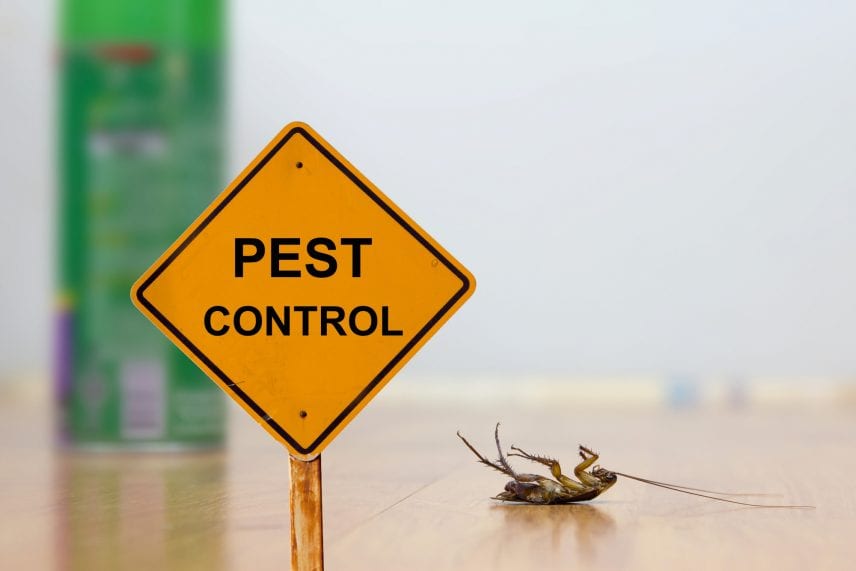Everyone has been there. You’re minding your own business when all of a sudden you see a cockroach crawling on your floor or wall. These insects appear all over the world and have been around for millions of years.
A common trope is that cockroaches are so hardy that they could even survive a blast from a nuclear bomb. But is this actually true? How long do cockroaches typically live anyway?
Keep reading for a list of the longest-living insects on Earth and to learn whether or not cockroaches can survive radiation.
Insect vs. Bug
Although many people use the terms insect and bug interchangeably, they don’t mean the same thing. To add to the confusion, the word bug can mean more than one thing.
In its strictest sense, the word bug is restricted to creatures within the biological order Hemiptera. Also called true bugs, this order contains things like cicadas, aphids, and bed bugs.
The definition of an insect is a little more broad. It includes everything in the biological class Insecta. This class includes everything from beetles and flies to bees and ants. However, it does not include arthropods like spiders and ticks.
More general use of the term bug might include these arthropods in addition to insects. When most people say the word bug, they mean any very small, crawling creature with legs.
Even though many bugs, among other things, can be pests in your home, the following list will deal only with insects.
Longest-Living Insects
The phrase longest-living insect is a little ambiguous. Does it refer to the average life-span of an insect or the amount of time a particular species of insect has existed? We will look at both here, but first is a list of the former.
Termites
Termites are widely known for their annoying ability to consume wood. They can infest homes and wooden structures and cause a great amount of damage. However, the queen termite is considered to be the longest-living insect on Earth.
Since termites can fly, this also makes the queen termite the longest-living flying insect. The average life-span of a queen termite is between 25 and 50 years. Scientists have even found termites at upwards of 100 years old.
In contrast to other long-lived insect species, the queen termite develops into adulthood quickly and lives most of its life as an adult. This makes the queen termite the longest-living adult insect as well.
Since they remain adults for almost their entire lives, queen termites continuously produce eggs. They can grow colony members by the thousands in just a few years.
Splendour Beetle
The splendour beetle, also known as the oak buprestid beetle, is a type of beetle in the family of jewel beetles. These commonly have shiny, bright colors and consume oak trees, which damages many local ecosystems.
Splendour beetles can live up to 30 years, mostly spent hiding away inside trees. They enter the trees in their larval form and remain there for almost their entire lives. They are not fully grown until they emerge from the trees to mate and lay eggs.
After several decades inside the trees, they only live on the outside for a few weeks or months before laying eggs and dying to make room for the next generation.
Cicadas
Cicadas are well known across the United States and Canada as well as in Australia. They make their presence known by being loud and infesting trees with big swarms. Cicadas live most of their lives underground and only come out every several years.
While the amount of time spent underground can vary by species, they usually come out in cycles of either 14 or 17 years. They come out to make, lay eggs, and die, similar to the life cycle of the splendour beetle.
This means the cicada can live up to 17 years, coming in third for the longest-living insect.
Cockroaches
Although cockroaches don’t live as long as the other insects on this list, they can be difficult to kill. They average only one year of life, but they can be a pest in many ways during that year.
They can survive many things, including being stepped on or losing parts of their legs or bodies. However, they are susceptible to nuclear radiation, contrary to popular belief.
While they can handle more radiation than the average human, they can only take about five times more, putting them on the lower end of radiation tolerance for insects.
Even though each generation of cockroaches is only about a year old, the species has been around for a lot longer. Cockroaches are believed to have been around for something like 280 million years, putting their origin in the Carboniferous era.
However, there are species of insects that have been around for longer.
Insect Evolution
The oldest known insect fossil is called Rhyniognatha at around 400 million years old. This puts it in the Early Devonian period, around the same time animals started to walk on land.
Although this species is now extinct, as are all prehistoric insect species, there are some incredibly old species of insect that are still around today.
Just a few years ago, scientists mapped the family tree of different insect species using genetics. This put the longest-living insect species as the silverfish. These primitive insects have been around almost as long as the oldest fossils at 400 million years.
Dragonflies and mayflies are almost as old at more than 300 million years. Crickets and katydids come next, followed by stick bugs and cockroaches.
Shortly after, you see termites and cicadas, followed by wasps, bees, and ants. Finally, you come to the most recent in insect evolution with beetles, moths and butterflies, and flies.
Next Steps
Now that you know what the longest-living insect is as well as some information about the evolution of insects, feel free to contact us for all of your pest control needs. If you enjoyed this article, please check out some of our other great articles!


